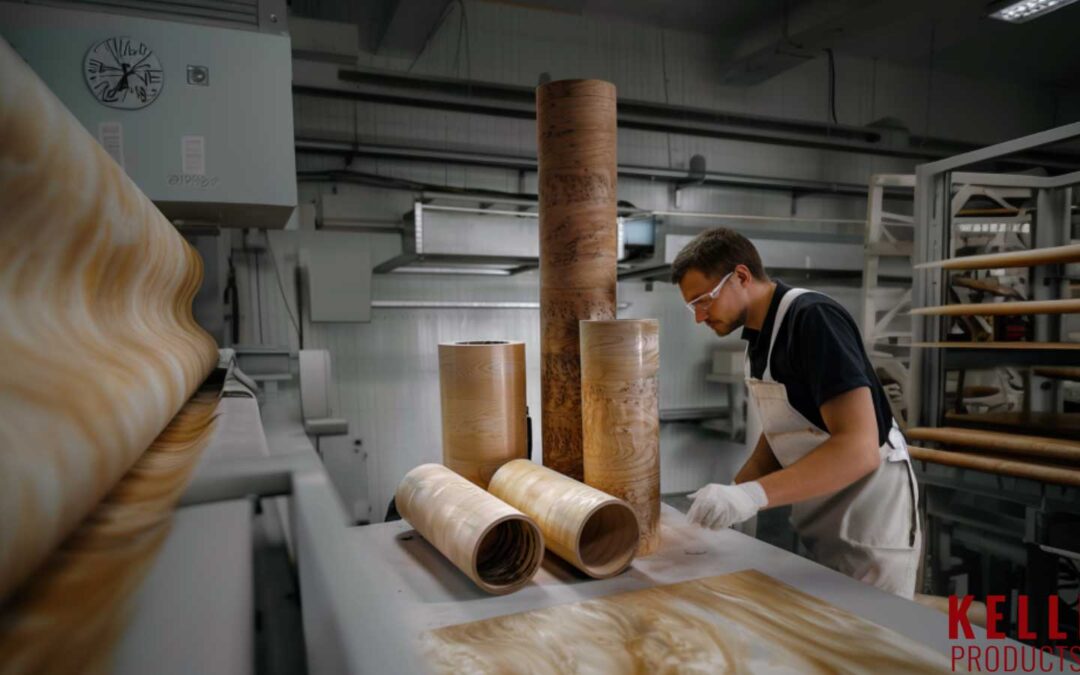Long utilized for their structural and aesthetic properties, wood cylinders continue to play a pivotal role across diverse sectors. From the rudimentary wooden rollers of ancient construction to sophisticated modern applications, these components have evolved, showcasing remarkable versatility and precision.
How do these cylindrical forms contribute to contemporary design and functionality? This blog explores their integral roles, from the core of furniture making to the complexities of architectural structures and beyond into niche markets and applications.
Essential Components in Furniture Design
Wood cylinders are not just elements in furniture design; they are foundational components that offer structural integrity and aesthetic flexibility. These cylindrical forms are crucial in producing functional and decorative furniture, accommodating a wide range of design preferences and practical applications.
- Table Bases: Wood cylinders act as central supports for table designs, from elegant dining sets to robust conference tables, ensuring stability and a touch of style.
- Chair Legs: Utilized for their durability, wood cylinders form the legs of chairs, providing the necessary support for seating used in various settings including homes, offices, and public spaces.
- Support Columns for Shelving Units: Wood cylinders serve as vertical supports in shelving units in residential and commercial settings, offering enhanced stability and a distinctive aesthetic. These columns can be designed to blend seamlessly with various decor styles, making them a versatile choice for designers seeking both function and form.
- Framework for Modular Partitions: Employed extensively in dynamic office layouts, wood cylinders are used to create the structural framework of modular partitions. This application allows for easy reconfiguration of spaces, adapting to changing business needs while maintaining a high standard of durability and design coherence.
These cylindrical wood components are pivotal in the creation of furniture that not only meets the ergonomic and style requirements of modern living but also adheres to the highest standards of craftsmanship.
Architectural Innovations with Wood Cylinders
Wood cylinders are employed in various architectural elements. Their robustness enhances the building’s integrity, and their natural aesthetics contribute to its visual appeal. In modern building designs, wood cylinders are often used as supportive beams or pillars that are visible within the interior layout, adding an organic architectural feature.
For exterior applications, these cylinders can be seen in features like rounded or spiral staircases, balcony supports, and even in the framework of innovative green building designs, where they merge functionality with environmental consciousness.
Architecturally, wood cylinders are also used in the restoration and reinforcement of historic structures, where maintaining aesthetic integrity is as crucial as ensuring structural safety. This use of wood cylinders in architecture underlines their versatility and importance in building designs that require both durability and a distinct style.
Enhancing Commercial Spaces
Wood cylinders’ versatility extends beyond basic structural roles, embracing innovative applications that stimulate both practical utility and visual appeal.
Artistic Installations
In the world of fine arts, wood pedestals provide a sophisticated platform to display sculptures and other art pieces. These pedestals are crafted to highlight the artwork without overshadowing it, allowing natural wood patterns to complement the artistry.
Beyond mere display, wooden cylinders are also utilized to create non-supportive elements in art installations, such as the central axles in kinetic sculptures, which facilitate movement and add an interactive dimension to the artwork.
Commercial Displays
Wood cylinders find a unique niche in the design of custom lighting fixtures, where they are used not as bases but as aesthetic conduits that enhance lighting elements. Designers leverage the organic look and feel of the wood to create bespoke chandeliers and pendant lights, where cylinders are fashioned into decorative housings for light bulbs or as frames for hanging light elements. This approach not only illuminates spaces but also adds a warm, inviting atmosphere through the wood’s natural texture.
These applications demonstrate the broad potential of wood cylinders beyond conventional uses, spotlighting their capacity to blend functional excellence with artistic expression. As they continue to shape artistic and commercial environments, wood cylinders stand out as a preferred choice for their versatility and the subtle, natural elegance they introduce to every setting.

Selecting the Ideal Wood Cylinder for Your Project
Choosing the right wood cylinder is crucial for the success of any project, whether it’s for architectural, furniture, or decorative purposes. The selection process involves understanding the specific requirements of your project and the unique characteristics of different wood types.
- Material Quality and Type: Opt for high-quality woods like hardwoods for their strength and durability or softwoods for lighter applications. Known for their layered stability and cost-effectiveness, plywood cylinders are excellent for uniform strength across all directions. Consider the specific traits of woods, such as oak for its hardness and grain texture, maple for its smooth finish, and cedar for its weather resistance.
- Size and Specifications: The wood cylinder’s dimensions should match your project’s scale and structural demands. Diameter and length are critical to ensuring the cylinder integrates seamlessly into your design without compromising on strength or aesthetic.
- Finish and Customization: Choose finishes that enhance the wood’s natural beauty and protect it from environmental factors. Laminated wood is particularly useful for achieving a refined look while providing an additional layer of durability. Specify any custom cuts or additions like caps or decorative elements that align with your project’s design theme.
Selecting the appropriate wood cylinder involves balancing functionality, aesthetic qualities, and environmental considerations. By understanding the specific needs of your project and the unique properties of different woods, you can make an informed choice that enhances the quality and sustainability of your final product.
The Craftsmanship Behind Wooden Cylinders at Keller Wood Products
Keller Wood Products’ process of creating wooden cylinders is a testament to our commitment to excellence and innovation. Here, we detail the meticulous steps in producing these essential components, highlighting our blend of traditional craftsmanship and modern technology.
- Wood Selection and Preparation: We begin by sourcing the highest-quality wood, chosen for its durability, grain texture, and environmental sustainability. Each selection is carefully inspected to ensure it meets our stringent standards. The wood is then seasoned to achieve optimal moisture content, ensuring stability and longevity in the final product.
- Design and Customization: Utilizing advanced 3D modeling software, our design team works closely with clients to tailor each wooden cylinder to their specific requirements. This stage involves adjusting dimensions, selecting finishes, and incorporating custom features such as caps, access doors, or wire manager cut-outs.
- Precision Cutting and Shaping: With the design set, our skilled technicians employ CNC routing technology to cut and shape the wood precisely. This technology allows for high precision and consistency, essential for the complex geometries often required in customized projects.
- Assembly and Finishing: Depending on the project’s specifications, the wooden cylinders may be constructed from a single piece of wood or assembled from several segments. Our one-piece construction technique enhances the structural integrity and aesthetic quality of the cylinders. The surfaces are then sanded to a smooth finish, ready for any final coatings or decorative treatments.
- Quality Control and Testing: Each cylinder undergoes rigorous testing to ensure it meets our high-quality standards. This includes stress tests, load-bearing assessments, and thorough inspections to check for any defects or inconsistencies.
- Sustainable Practices: Throughout the manufacturing process, Keller Wood Products adheres to eco-friendly practices. We minimize waste by repurposing offcuts and use environmentally safe adhesives and finishes to reduce our ecological footprint.
The versatile applications of wood cylinders illustrate their essential role in both traditional and innovative design contexts. From enhancing structural integrity in architecture to adding elegance in commercial and artistic displays, the right choice of wood cylinder can significantly impact your project’s success. For tailored advice and superior wood cylinders that meet your specific needs, reach out to Keller Wood Products today!

